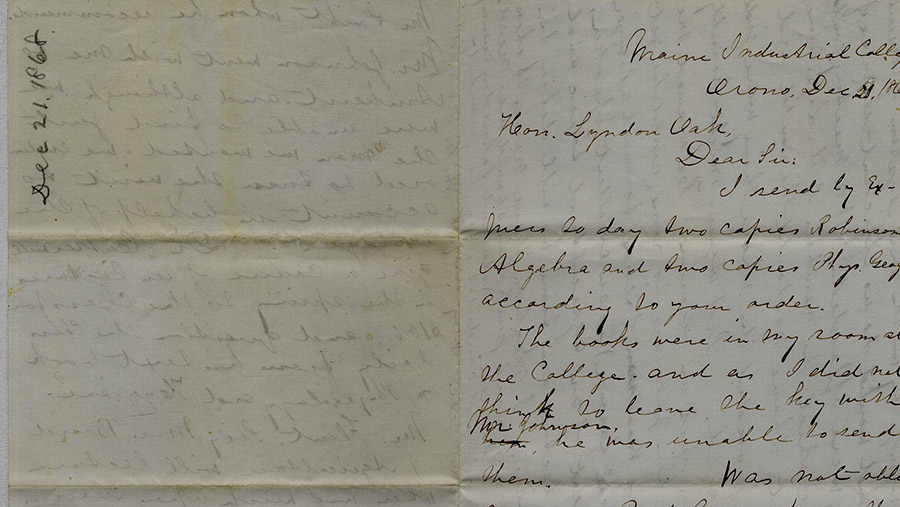
Mystery in the Archives
A historical mystery brings together two scientists, a historian and the University Archivist
By Matthew Revitt
In June of this year, I received a call in Special Collections from Harold Borns, Professor Emeritus in the School of Earth and Climate Sciences and the Climate Change Institute.
The mystery Professor Borns wanted to solve was whether Fogler Library’s University Archive records could prove that scientist Louis Agassiz came to Maine in the 1860s to lobby the Maine legislature in support of funding the construction of additional campus buildings for scientific research at the University of Maine (then known as the Maine State College). If evidence existed, Borns wanted to pursue formal recognition of Agassiz’s part in the establishment of the University of Maine.
Louis Agassiz is considered to be the “Father” of the Ice Age concept as announced to the world in 1837. Agassiz was also an effective advocate for developing public universities and for the status of American science. During his career, Agassiz wrote a good deal on his observations of glacial features in Maine — work that greatly influenced scientists like Professor Borns.
Professor Borns had been told of Agassiz’s visit by the historian and professor emeritus Dr. David C. Smith, who wrote The First Century: A History of the University of Maine, 1865-1965.
According to Borns, in writing his book Professor Smith carried out an “enormous amount of research of our, and other, records, much of which was not included in the final book. Apparently Agassiz’s visit was part of the record left out.”
With Professor Borns’ charge, I started my research with a review of Professor Smith’s book, which referred to a visit by M.C. Fernald, the first UMaine faculty member and its second president, and Samuel Johnson to the Massachusetts College of Agriculture, where the “visitors received encouragement from Professor Agassiz, who urged them to provide a plant house and botanical garden for experimental purposes” (Smith, 1979). Professor Smith’s footnotes indicated that his source for Agassiz’s support were letters between M.C. Fernald and University of Maine Board of Trustee Lyndon Oak from 1869.
Using Fogler Library’s web-based archives information management system, ArchivesSpace, I located the specific letter Professor Smith referred to. Although the letter did refer to a conversation between Fernald and Agassiz, in which Agassiz said “it will give him pleasure to come, could he get the time,” I could not find evidence in subsequent correspondence that referred to Louis Agassiz actually visiting Maine.
Hoping there might be records of appropriations committees in support of the University of Maine held by the State of Maine, I contacted colleagues at the Maine Legislative Library and the State Archive, but neither could find evidence of support from Agassiz. My final lead was the Agassiz papers held at Harvard University, but after searching their online archival database, I was unable to identify material in the 4 boxes of correspondence that might relate to the University of Maine. In the world of archives, often to find the full story you have to look through the materials themselves.
While it was disappointing to not find evidence of Agassiz’s visit, there’s still hope. Fogler’s Special Collections holds 83 boxes of Professor Smith’s papers that are yet to be catalogued, so perhaps the answer to this mystery will be found at a later date.
This story was originally featured in the 2018 Raymond H. Fogler Library Magazine.
